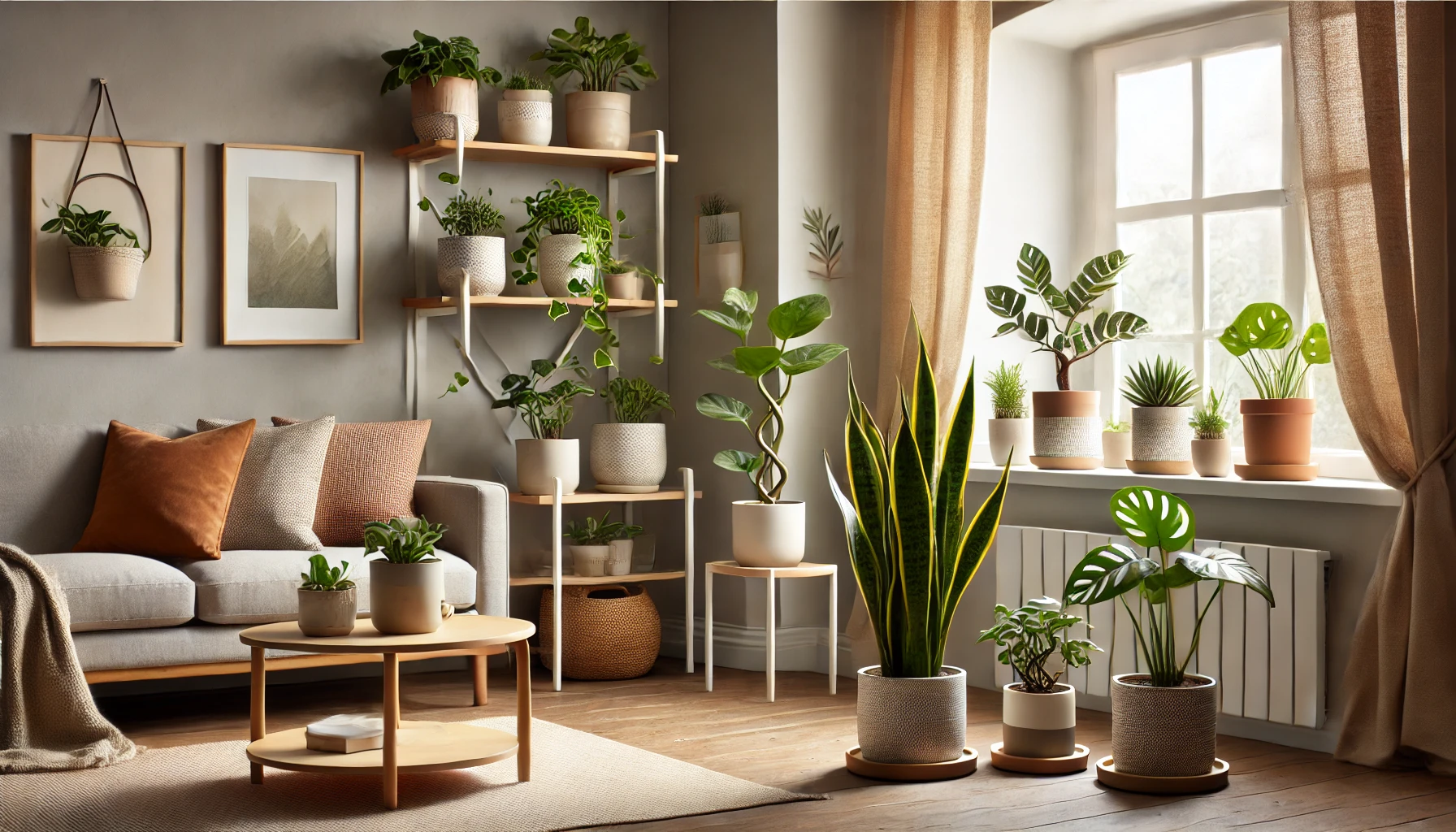Starting your indoor plant journey can be exciting, but it’s important to choose plants that are easy to care for and forgiving of occasional mistakes. Beginner-friendly indoor plants are resilient, adaptable, and require minimal maintenance. In this guide, we’ll highlight the best indoor plants for beginners and provide tips to keep them thriving.
Why Start with Beginner-Friendly Plants?
Beginner-friendly plants help build confidence as you learn the basics of plant care. These plants tolerate less-than-ideal conditions, occasional overwatering or underwatering, and are less prone to pests and diseases. They’re perfect for busy lifestyles or anyone new to indoor gardening.
Top Indoor Plants for Beginners
1. Snake Plant (Sansevieria)
- Why It’s Great: Snake plants are virtually indestructible. They tolerate low light, infrequent watering, and thrive on neglect.
- Care Tips: Allow the soil to dry out completely between waterings. Place them in indirect light, but they can adapt to low light.
2. Pothos (Epipremnum aureum)
- Why It’s Great: Pothos is a fast-growing vine with beautiful, heart-shaped leaves. It’s extremely adaptable and purifies the air.
- Care Tips: Water when the top inch of soil is dry. Pothos grows well in bright, indirect light but can tolerate low light.
3. ZZ Plant (Zamioculcas zamiifolia)
- Why It’s Great: ZZ plants are drought-tolerant and can thrive in almost any lighting condition. Their glossy leaves add elegance to any space.
- Care Tips: Water only when the soil is completely dry. They prefer low to medium light.
4. Spider Plant (Chlorophytum comosum)
- Why It’s Great: Spider plants are easy to care for and produce “babies” that can be propagated into new plants.
- Care Tips: Keep the soil lightly moist and provide bright, indirect light.
5. Peace Lily (Spathiphyllum)
- Why It’s Great: Peace lilies are known for their striking white flowers and air-purifying abilities. They communicate their water needs by drooping.
- Care Tips: Water when the leaves start to droop slightly. They thrive in medium to low light.
6. Aloe Vera
- Why It’s Great: Aloe vera is a low-maintenance succulent with medicinal properties. Its gel can soothe burns and cuts.
- Care Tips: Let the soil dry out completely between waterings. Place in bright, indirect light.
7. Philodendron
- Why It’s Great: Philodendrons are versatile and forgiving plants with lush green leaves that adapt well to most indoor environments.
- Care Tips: Water when the soil is dry to the touch. Provide bright, indirect light for optimal growth.
8. Cactus
- Why It’s Great: Cacti are perfect for those who forget to water their plants. They’re drought-tolerant and add a unique aesthetic to your space.
- Care Tips: Water sparingly and ensure the soil drains well. They require bright, direct light.
9. Jade Plant (Crassula ovata)
- Why It’s Great: Jade plants are hardy succulents with thick, glossy leaves. They’re slow-growing and long-lasting.
- Care Tips: Let the soil dry out completely before watering. Place in bright, indirect sunlight.
10. Rubber Plant (Ficus elastica)
- Why It’s Great: Rubber plants are visually stunning with large, shiny leaves. They’re easy to care for and grow well indoors.
- Care Tips: Water when the topsoil feels dry. Keep them in bright, indirect light.
General Tips for Beginners
- Start Small: Begin with one or two plants to avoid feeling overwhelmed. Gradually expand your collection as you gain confidence.
- Learn Your Plant’s Needs: Understand each plant’s light, water, and humidity requirements for better care.
- Use the Right Pot: Choose pots with drainage holes to prevent overwatering.
- Monitor Light Levels: Place plants in areas that match their light preferences, whether it’s low, medium, or bright indirect light.
- Be Patient: Plants take time to adjust to their environment. Don’t worry if they don’t grow rapidly right away.
Common Mistakes to Avoid
- Overwatering: This is the most common mistake. Always check the soil moisture before watering.
- Using the Wrong Soil: Different plants require different soil types. Use a mix suited for your plant, such as cactus soil for succulents.
- Ignoring Light Requirements: Placing a sun-loving plant in a dark corner will lead to poor growth.
- Skipping Routine Care: Dusting leaves, pruning dead foliage, and rotating plants are small steps that make a big difference.
Starting your indoor plant journey with resilient and low-maintenance options ensures a rewarding experience. With these beginner-friendly plants and simple care tips, you’ll soon have a thriving indoor garden that adds beauty and joy to your home.
